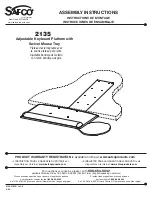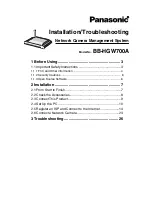
Flow monitoring
Immersion sensor without integrated processor
FCS-GL1/2TN-NAEX-H1141
Edition
•
2016-06-25T23:48:01+02:00
1 / 2
Hans Turck GmbH & Co.KG
ñ
D-45472 Mülheim an der Ruhr
ñ
Witzlebenstraße 7
ñ
Tel. 0208 4952-0
ñ
Fax 0208 4952-264
ñ
ñ
www.turck.com
Type code
FCS-GL1/2TN-NAEX-H1141
Ident no.
6870443
Mounting conditions
insertion style sensor
Water Operating Range
1…100cm/s
Oil Operating Range
3…200 cm/s
Stand-by time
typ. 8 s (2…18 s)
Switch-on time
typ. 2 s (1…13 s)
Switch-off time
typ. 2 s (1…15 s)
Temperature jump, response time
max. 12 s
Temperature gradient
ð
250 K/min
Medium temperature
-20…85 °C
Device designation
É
II 2 G EEx ib IIC T6
ignition protection category
Ex ib IIC
PowerP
i
ð
0.69 W
Internal inductances/capacitances
negligibly small
Ex approval acc. to conformity certificate
TÜV 99 ATEX 1518
Protection class
IP67
Housing material
Metal, Titanium/Metal ceramics (3.7235)
Sensor material
metal, Titanium/metal ceramic (3.7235)
Max. tightening torque housing nut
30 Nm
Connection
Flange connector, M12 x 1
Pressure resistance
60 bar
Process connection
G ½" long
■
ATEX category II 2 G, Ex Zone 1
■
Ex flow sensor for liquid media
■
Calorimetric principle
■
Adjustment via signal processor
■
Status displayed via signal processor
■
Sensor made of Titanium B3 with met-
al-ceramic coating
■
Intrinsically safe EEx ib IIC T6, for use
in zone 1
■
Plug-in device, M12 x 1
■
4-wire connection to an Ex0 processor
Wiring Diagram
Functional principle
Our insertion - flow sensors operate on the
principle of thermodynamics. The measur-
ing probe is heated by several °C as against
the flow medium. When fluid moves along the
probe, the heat generated in the probe is dis-
sipated. The resulting temperature is mea-
sured and compared to the medium tempera-
ture. The flow status of every medium can be
derived from the evaluated temperature differ-
ence. Thus TURCK's wear-free flow sensors
reliably monitor the flow of gaseous and liquid
media.




















